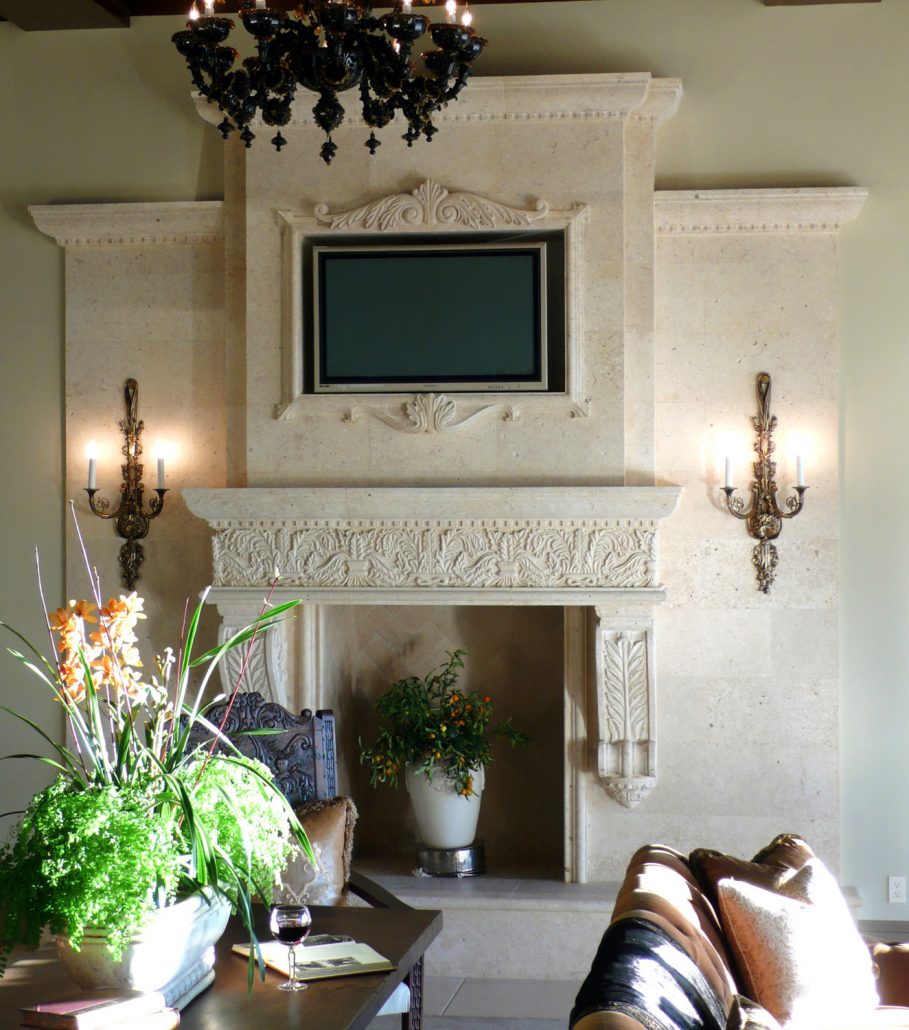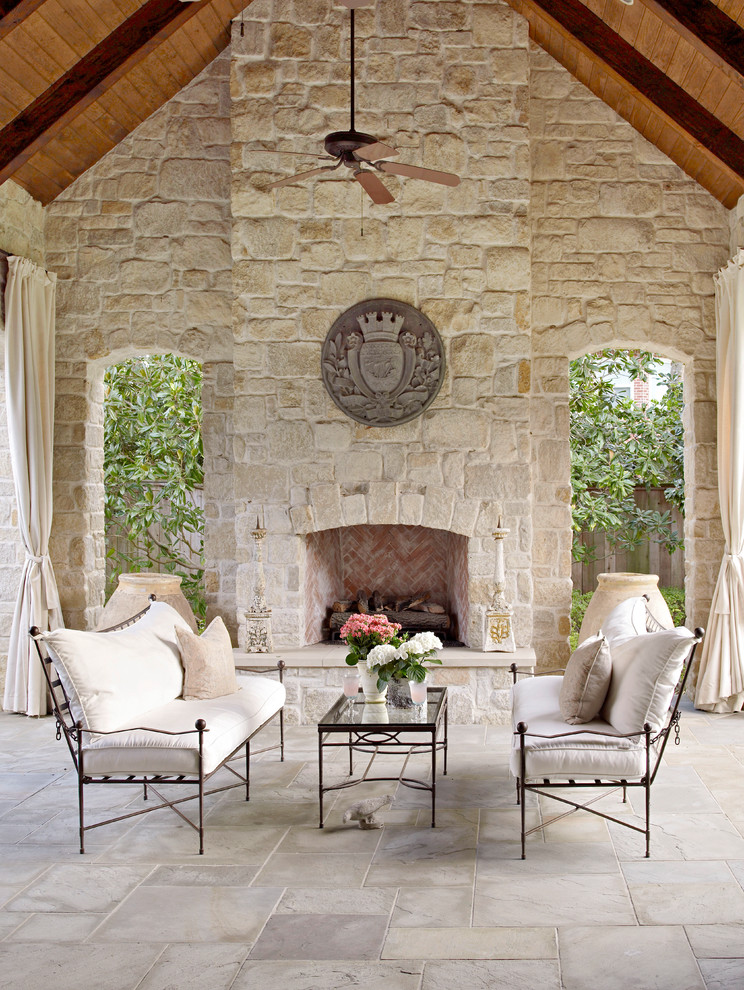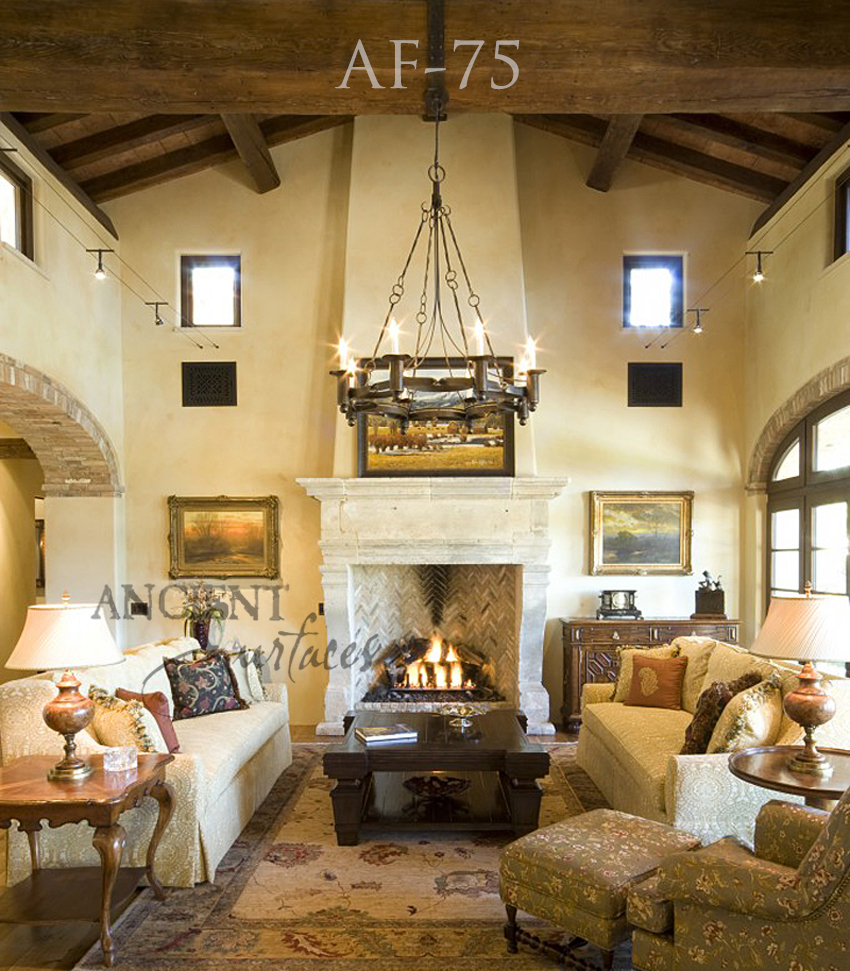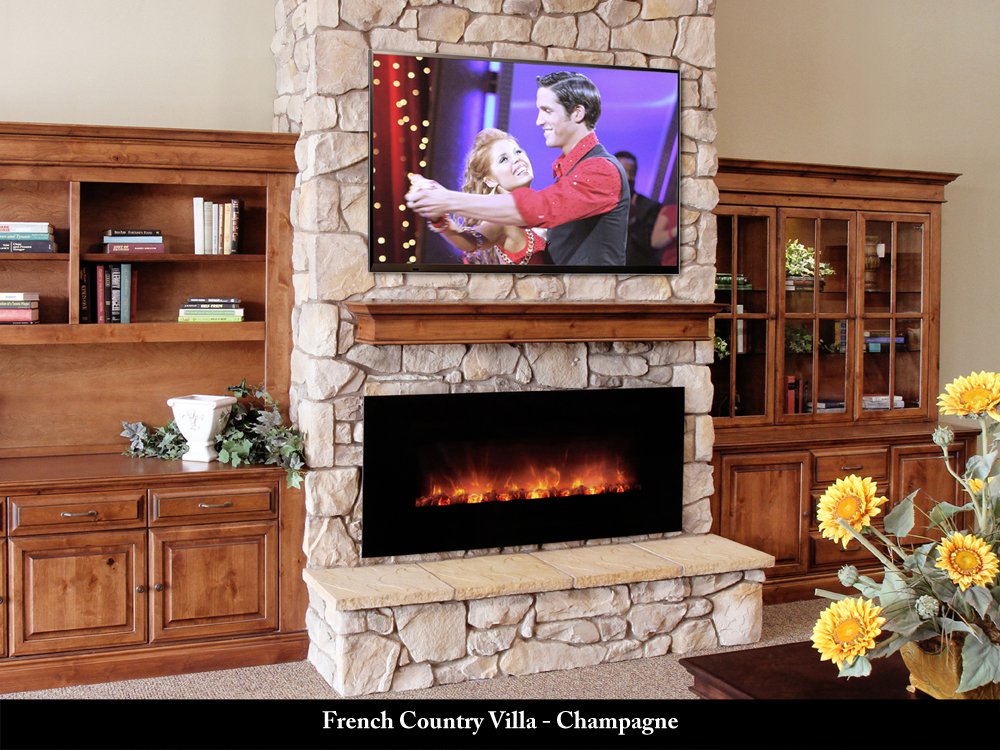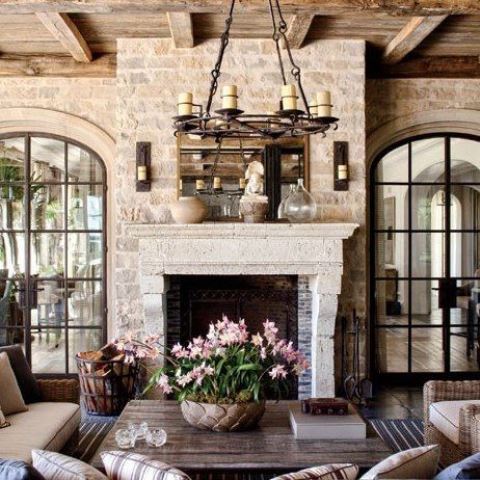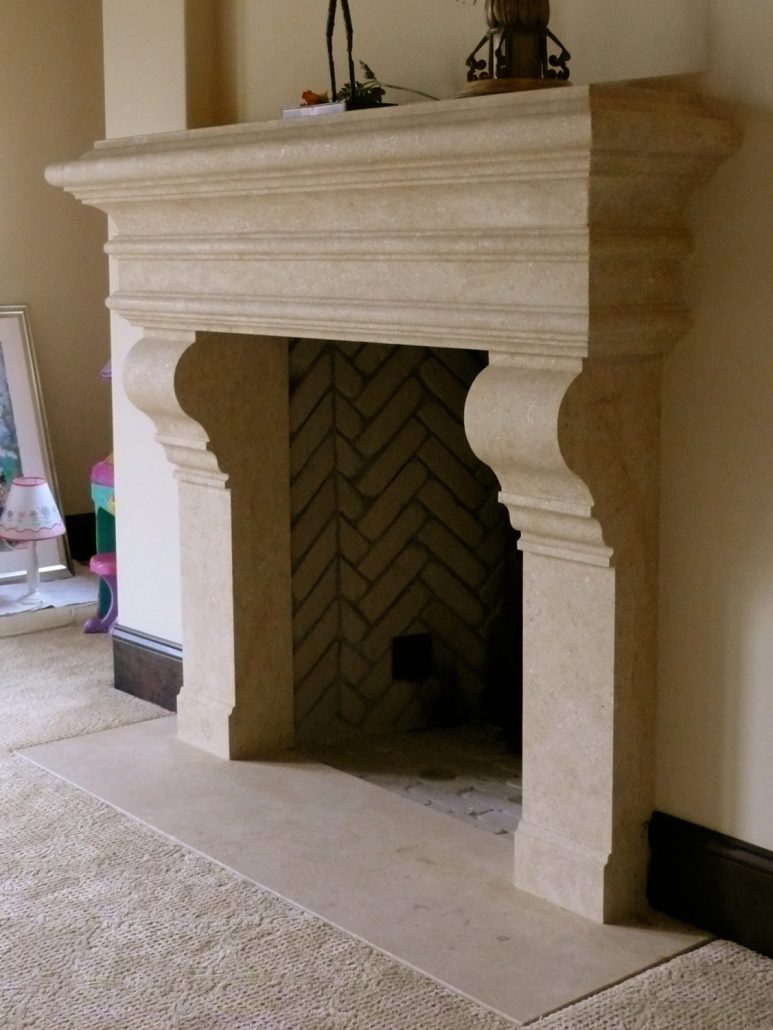French style stone fireplaces are unquestionably beautiful, and they instantly elevate any living room. I’ve always been captivated to its rustic yet elegant look, which combines natural materials and superb craftsmanship. These fireplaces are more than simply useful heating devices; they are statement pieces that provide old-world flavor to a room. Whether you’re restoring an older home or adding flair to a new construction, a French style stone fireplace provides warmth and sophistication that will last for decades.
The History of French Stone Fireplaces
French stone fireplaces date back to medieval times, when they served as the heart of the home. I discovered that regional farmhouses frequently had enormous stone hearths where families cooked, congregated, and warmed themselves. The artistry reflected local materials and traditions, with limestone being especially prevalent in areas such as Provence. What fascinates me is how these designs changed during the Renaissance and Baroque periods, growing increasingly beautiful while preserving their solid stone construction.
During my travels around rural France, I saw how each region evolved unique fireplace styles. Normandy preferred granite with clean lines, whilst Burgundy welcomed more sculptural elements. The common thread was always excellent stonework and sensible design. Many original 18th-century versions continue to function well today, demonstrating their endurance. I admire how updated models retain these time-honored qualities while adjusting to modern heating requirements.
What distinguishes these fireplaces is their connection to French architectural heritage. They were not simply built; they were meticulously fashioned by expert artisans who recognized stone’s natural properties. The stone’s small blemishes and variations add to its appeal. My own French style fireplace has organic textures that mass-produced units simply cannot match. It’s like owning a piece of history while enjoying all of the benefits of modern living.
Key Design Elements To Recognize
Authentic French style stone fireplaces have various distinguishing characteristics that I have come to recognize. The mantel is often large, built from a single piece of limestone or carved from several stone pieces. I chose one with a gently curved underside (known as a “cove” mantel), which is traditional French country decor. The surround is usually wider than modern fireplaces, and may have built-in bookcases or ornate niches on the sides.
The firebox aperture has classic proportions: higher than wide, with an arched or squared-off top. Mine has a slightly tapered form that leads the eye up. Many original French models have a bread oven or warming rack built into the side, but I went for a simpler design. The stone itself has hand-tooled marks rather than being flawlessly smooth, which gives it that artisanal touch I adore. The mortar joints are also part of the design, often slightly recessed to showcase the stonework.
Decorative features vary by region, although they commonly incorporate delicate carvings or iron embellishments. Some have carved floral motifs or grapevine patterns that depict French countryside life. I completed the look with old iron fire implements and a matching screen. The entire impression should be balanced and proportional, with enough character to stand out. When properly created, these fireplaces appear to be a permanent fixture in the home.
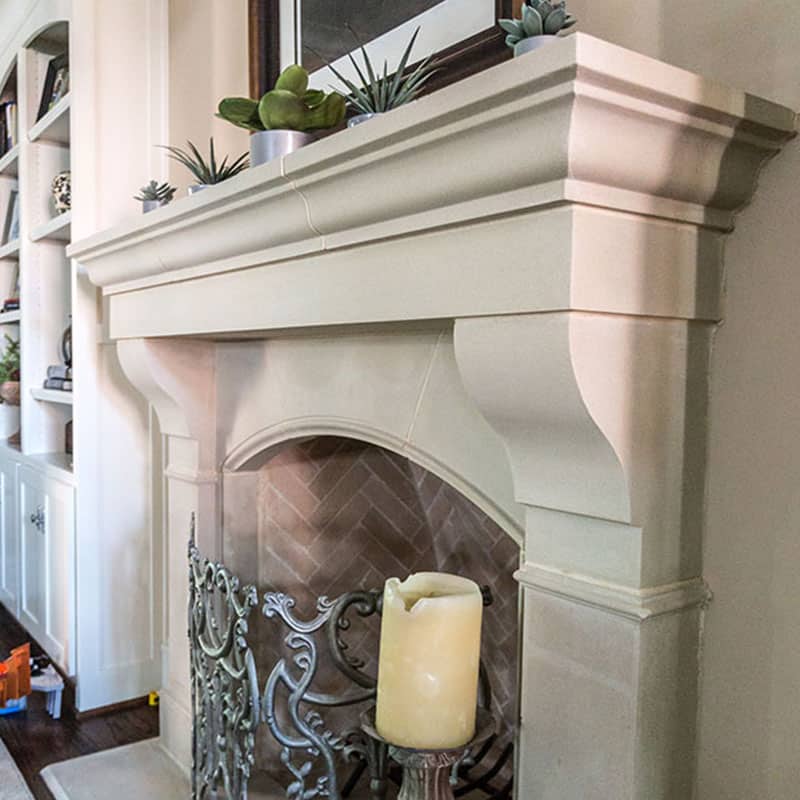
Choosing the Right Stone Material
Choosing the right stone is critical for creating an authentic French style. Limestone is the most conventional choice, and I chose French limestone because of its warm cream tones and smooth texture. It develops a wonderful patina with time, similar to the stone walls in Provençal farmhouses. Sandstone is another fantastic alternative with more color variation, ideal for achieving a rustic, aged appearance.
For a more formal chateau look, choose marble or polished travertine. These provide elegance while yet maintaining the French flavor. I chose limestone over marble because the matte surface suited my country-style home better. Granite is also a good choice, especially if you want a Norman or Breton seaside vibe. Whatever stone you choose, be sure it is fireplace-safe and can sustain high heat.
The polish of the stone has a significant impact on its overall appearance. A honed or tumbled finish achieves the weathered, timeworn look I desired. Some companies sell historic salvaged stone from French structures, however this comes at a higher cost. I saved money by using new stone with an aged finish that resembles decades of wear. Remember that real stone will have color variations; accept this as part of its beauty rather than viewing it as an inconsistency.
Bringing French Style to Modern Homes
You don’t need a centuries-old cottage to appreciate a French stone fireplace. I installed mine in a recently built home, and it became the distinguishing architectural element. The trick is to strike the right balance between historic features and your existing decor. I kept the surrounding walls neutral to allow the stone to take center stage, then added French country furnishings to compliment rather than compete.
Consider reducing the design in contemporary areas while maintaining vital French traits. A clean-lined stone surround with minimal carving can elegantly blend ancient and current styles. In my friend’s modern loft, a sleek limestone fireplace provided a tactile contrast to the pristine walls and minimalist furnishings. The warmth of natural stone softens even the most contemporary spaces.
Open space layouts pose distinct issues for fireplace location. Mine is positioned to divide the living and eating areas without blocking sightlines. The massive stone mass defines spaces while preserving an open sense. If you have limited room, a corner French fireplace might be equally charming. The crucial thing is to make it feel intentional, as if it was always meant to be there.
Professional Installation Considerations
While some capable homeowners may attempt installation, I strongly advise hiring a professional mason for French style stone fireplaces. The weight alone necessitates adequate structural support; my fireplace required reinforced flooring beneath it. A expert will also check for correct ventilation, smoke chamber design, and fireproof clearances. I interviewed numerous masons before choosing one who is knowledgeable with classic French procedures.
The installation process takes time, especially with bespoke designs. Mine took three weeks, from foundation to finishing touches. First came the concrete footing, then the steel lintel over the firebox, and finally the precise stone placement. Before final placement, the masons dry-fit each piece, taking into account the natural differences in the stone. Watching them work was like watching an artist create; every stone found its proper place.
Don’t forget about practical aspects like damper controls and ash cleanout access. My mason fitted them neatly into the design. We also added gas log starters while keeping the option for wood burning. If you are adding a mantel, talk about the weight limits for hanging ornaments. Proper installation assures that your fireplace will be safe, effective, and visually appealing for decades.
Maintaining Your Stone Fireplace
French stone fireplaces demand different maintenance than modern prefabricated models. I discovered that strong chemical cleansers can degrade the stone’s natural patina. For basic cleaning, I prefer to use a soft brush and light soap. A baking soda and water poultice works wonders for soot buildup while being non-abrasive. Annual inspections help to detect any masonry deterioration before it gets serious.
Over time, the stone may brown slightly near the firebox, which I like because it adds to its antique charm. Significant discolouration, on the other hand, may indicate a problem with ventilation that requires professional treatment. I safeguard my hearth stone from direct heat damage by using an appropriate grate and never overdoing the fire. In the winter, I use a stone sealer to guard against moisture from melted snow tracked within.
Regular chimney sweeping is necessary; I schedule mine every other year because I don’t burn wood every day. The mason who built my fireplace taught me how to look for cracks or loose stones during seasonal cleanings. With appropriate maintenance, these fireplaces only get more attractive with age, achieving the authentic French farmhouse style that everyone admires in my home.
How much does a French-style stone fireplace usually cost?
Prices vary greatly depending on size, stone type, and complexity, but a competent installation will cost between $5,000 and $20,000. My mid-sized limestone fireplace with bespoke carving cost approximately $12,000 to install. Prefabricated stone veneer choices are less expensive, but they lack real depth and texture. Remember, this is a long-term investment that adds tremendous value to your property beyond its appearance.
Can I change my current fireplace to French style?
Yes, many existing fireplaces can be updated with stone surrounds and mantels. I’ve seen stunning conversions of brick fireplaces coated in French limestone with new hearths. The trick is to ensure that your existing structure can handle the stone’s weight and that the firebox measurements are compatible with the new design. A qualified mason can evaluate your system and recommend needed changes.
What is the distinction between French and English style fireplaces?
While both use high-quality masonry, French designs are more sculptural, with curving lines and ornate accents, whilst English forms are typically more angular and substantial. French mantels usually have carvings of natural motifs, whilst English counterparts may include heraldic insignia. The shapes of the fireboxes also differ; French are typically taller, while English are wider. I favor French because of its elegant proportions.
Are French stone fireplaces compatible with central heating?
Absolutely! Many homeowners, like me, use them as supplemental heating sources and focal points. Even after the fire has died down, the thermal mass of stone continues to emit warmth. Installing heat-exchange tubes or fans can improve efficiency. My fireplace creates a nice ambiance while my HVAC handles primary heating – the ideal balance of design and function.
How do I determine the appropriate size for my room?
Proportion is essential; too small gets missed, while too huge overwhelms. A decent rule is to make the mantel roughly two-thirds the width of the wall it is on. My 15×20 living area features a 5-foot-wide fireplace that is nicely balanced. Ceiling height also matters; taller spaces can support more vertical designs. Bring room measurements when discussing with designers to ensure proper scaling.
Are there modern heating options that appear traditional?
Yes! Gas inserts and electric log sets can seem remarkably similar to wood-burning fireplaces. I chose a gas starter system buried behind actual logs for convenience when needed and authentic fires when desired. New electric “flame” technology produces surprisingly realistic effects that do not require venting. Simply verify that any modern components are expertly installed for safety and functionality.
Coronado Stone Products – Residential Projects – Fireplaces
Awesome Whitewashed Fireplace Designs
French Country Fireplace ideas country fireplace
Custom French Provincial Stone Fireplace Mantels
Related Posts:



